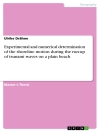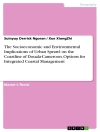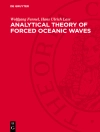Submarine mass movements and their consequences are of major concern for coastal communities and infrastructures but also for the exploitation and the development of seafloor resources. A tragic example of the vulnerability of coastal communities has been provided by the Indonesian tsunami of December 2004. Since 2005, as part of the scientific community efforts to minimize the impact of such natural disasters, the International Union of Geological Science (IUGS) and the United Nation, Educational, Scientific, and Cultural Organization (UNESCO) have sponsored an International Geoscience Program on Submarine Mass Movements and Their Consequences (IGCP-511). One of the main objectives of IGCP-511 members is to hold bi-annual symposia on these types of marine and coastal geohazards. The first symposium of this series was held in Nice (2003) and the second in Oslo (2005). This 3rd Symposium on submarine Mass Movements and Their consequences provides an opportunity to review the state of the art in risk evaluation from submarine landslides, deposit characterization and its implication for coastal and offshore development. By bringing together professionals from the industry and academia with a range of different expertise, these proceedings hope to cover the full spectrum of aspects related to subaqueous mass movements and related consequences. The interdisciplinary views gathered in this book, arising from the conference, help identify future challenges, mitigation strategies and better management of the seafloor. To that effect, the Santorini is quite a unique venue for scientists and engineers interested in marine and coastal geohazards.
Table of Content
Role of submarine slides in margin development.- Fractal statistics of the Storegga Slide.- Submarine Paleo-Failure Morphology On A Glaciated Continental Margin From 3d Seismic Data.- Slope Instability And Mass Transport Deposits On The Godavari River Delta, East Indian Margin From A Regional Geological Perspective.- Repeated Instability Of The Nw African Margin Related To Buried Landslide Scarps.- Along Slope Variations In Mass Failures And Relationships To Major Plio-Pleistocene Morphological Elements, Sw Labrador Sea.- Submarine Landslides Along The North Ecuador – South Colombia Convergent Margin: Possible Tectonic Control.- The Southern Flank Of The Storegga Slide: Imaging And Geomorphological Analyses Using 3d Seismic.- Submarine Mass Movements On An Active Fault System In The Central Gulf Of Corinth.- Analysis Of Multibeam Seafloor Imagery Of The Laurentian Fan And The 1929 Grand Banks Landslide Area.- Landslide And Gravity Flow Features And Processes Of The Nazaré And Setúbal Canyons, West Iberian Margin.- Mass waste evolution: From slump to distal turbidites.- Experimental Studies Of Subaqueous Vs. Subaerial Debris Flows – Velocity Characteristics As A function Of The Ambient Fluid.- The General Behavior Of Mass Gravity Flows In The Marine Environment.- Submarine Spreading: Dynamics And Development.- Flood-Induced Turbidites From Northern Hudson Bay And Western Hudson Strait: A Two-Pulse Record Of Lake Agassiz Final Outburst Flood?.- Underwater Rockfall Kinematics: A Preliminary Analysis.- Anthropogenic Turbidity Current Deposits In A Seismically Active Graben, The Gulf Of Corinth, Greece: A Useful Tool For Studying Turbidity Current Transport Processes.- New techniques, approaches and challenges in submarine slope instability analysis.- Probability Study On Submarine Slope Stability.- Marine Deep-Water Free-Fall Cpt Measurements For Landslide Characterisation Off Crete, Greece (Eastern Mediterranean Sea) Part 1: A New 4000M Cone Penetrometer.- Monitoring stress on submarine slopes and sediment physical properties.- Linking Geotechnical And Rheological Properties From Failure To Post-Failure: The Pointe-Du-Fort Slide, Saguenay Fjord, Québec.- Rheological Properties Of Fine-Grained Sediments In Modeling Submarine Mass Movements: The Role Of Texture.- Marine Deep-Water Free-Fall Cpt Measurements For Landslide Characterisation Off Crete, Greece (Eastern Mediterranean Sea) Part 2: Initial Data From The Western Cretan Sea.- Recursive Failure Of The Gulf Of Mexico Continental Slope: Timing And Causes.- Geotechnical Considerations Of Submarine Canyon Formation: The Case Of Cap De Creus Canyon.- Submarine slides in coastal areas, semienclosed seas (fjords, estuaries, gulfs) and lakes.- Submarine Mass Movements In The Betsiamites Area, Lower St. Lawrence Estuary, Québec, Canada.- Submerged Landslide Morphologies In The Albano Lake (Rome, Italy).- Dynamics Of The Deltaic Canyon Area Of The Rv. Chorokhi, Georgia.- The 1990 Submarine Slide Outside The Nidelv River Mouth, Trondheim, Norway.- Submarine Slope Failures Near Seward, Alaska, During The M9.2 1964 Earthquake.- The Ad 1881 Earthquake-Triggered Slump And Late Holocene Flood-Induced Turbidites From Proglacial Lake Bramant, Western French Alps.- Morphosedimentology Of Submarine Mass-Movements And Gravity Flows Offshore Sept-Îles, Nw Gulf Of St. Lawrence (Québec, Canada).- Sediment Failure Processes In Active Grabens: The Western Gulf Of Corinth (Greece).- Submarine landslides in volcanic island settings.- High Frequency Sediment Failures In A Submarine Volcanic Environment:The Santorini (Thera) Basin In The Aegean Sea.- Sediment Stability Conditions West Of Milos Island, West Hellenic Volcanic Arc.- Submarine mass movements and tsunamis.- Mass Wasting Processes – Offshore Sumatra.- Slope Failures Of The Flanks Of The Southern Cape Verde Islands.- Triggering Factors And Tsunamigenic Potential Of A Large Submarine Mass Failure On The Western Nile Margin (Rosetta Area, Egypt).- Reassessment Of Seismically Induced, Tsunamigenic Submarine Slope Failures In Port Valdez, Alaska, USA.- Towards The Mitigation Of The Tsunami Risk By Submarine Mass Failures In The Gulf Of Corinth: The Xylocastro Resort Town Case Study.- Probabilistic Smf Tsunami Hazard Assessment For The Upper East Coast Of The United States.- Role Of Soil Behavior On The Initial Kinematics Of Tsunamigenic Slides.- Revisiting Submarine Mass Movements Along The U.S. Atlantic Continental Margin: Implications For Tsunami Hazards.- Tsunamigenic Landslides In The Western Corinth Gulf: Numerical Scenarios.- Tsunamis Generated By Coastal And Submarine Landslides In The Mediterranean Sea.












